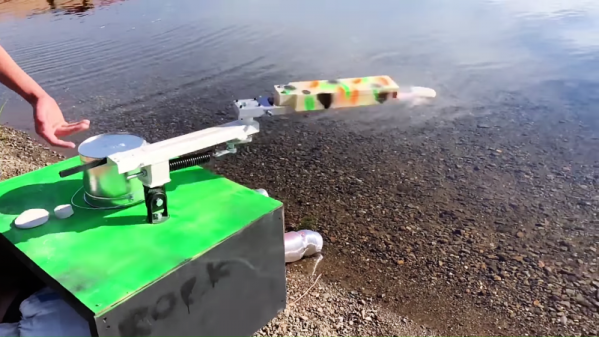Summer is here (at least in the Northern Hemisphere) and World’s Greatest Uncle [Mark Rober] is at it again with his nieces and nephews. This time he’s all about skipping stones, that shoreline pastime that kids sometimes find frustrating and adults find humiliating when trying to demonstrate the technique.
But what exactly is the proper technique? [Mark] didn’t know, so he built a robot to find out. Yes, we know it’s not a robot – it’s just a commercial clay pigeon launcher with a few modifications — but work with us here. His idea is to build a rig that can eliminate as many variables as possible when a human tries to skip a stone, and work back one variable at a time to find the perfect set of factors. The prototype in the video below did a respectable job skipping stones, but it was nowhere near optimal. [Mark] then engaged the kids on a careful exploration of the mechanics of rock skipping using the rig, eventually going so far as to eliminate variability in the rocks by making clay pigeons of his own. The results are fantastic; at a 20° approach angle and a 20° tilt of the rock relative to the water, those artificial stones just seem to go on forever. Even skipping natural stones was much improved by what they learned, which is completely counter to the age-old advice to release as low and as parallel to the water as possible.
The real gem in this video, though, is [Mark] describing his engineering design process. Watch and learn, because he clearly knows a thing or two about turning ideas into fun stuff, such as enormous Super Soakers, fully automatic snowball guns, and dart-catching dartboards.
Continue reading “Engineering The Perfect Throw For Rock Skipping”











